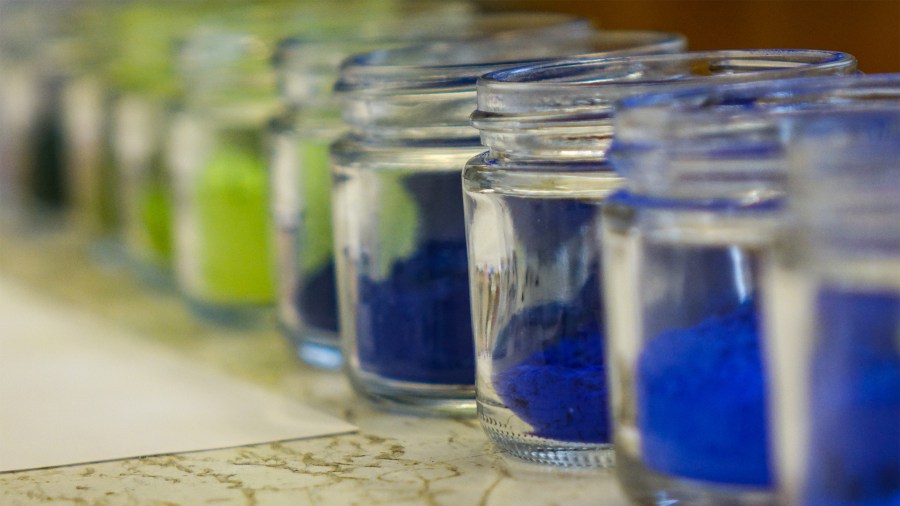The technology behind the discovery of a new blue hue

It turns out that it’s very rare to discover new color pigments. An Oregon chemist made a major breakthrough in the science of color a decade ago. He discovered the first new blue pigment in more than 200 years. Just about a month ago, the pigment was cleared for use in commercial products that, as it happens, are actually more energy-efficient as conventional paint and surface colorings. Now, that same chemist is pushing color science forward, again.
Mas Subramanian is a scientist versed in serendipity — you know, the happy chance occurrence, the lottery of the amazing.
“Many of the important scientific discoveries come by accident. Clearly, it’s part of doing science,” Subramanian said.
Serendipity was in play a decade ago when his Oregon State University lab discovered the pigment, which would be named YInMn blue. He was looking for new materials to use in electronics, but what came out of the furnace was something else entirely.
“I couldn’t believe it. I was shocked because the samples came out so blue,” Subramanian said.
Paints made with YInMn blue are highly heat-reflective, and the formula has been licensed for use. Since the discovery, Subramanian has focused on the chemistry of color.
He and Brett Duell, who just got his Ph.D., started experimenting with a mineral called hibonite, which is mostly found in meteorites. They tried adding a little bit of cobalt to make another new blue pigment. “We didn’t expect it to be as intense as it was,” Duell said.
The formula for cobalt blue made without hibonite was discovered about 200 years ago, but paint made with the pigment comes with health warnings because it can be toxic. This new color could be less toxic because it uses a fraction of the cobalt.
“The amount of cobalt was so low giving off the same color, essentially. It was a little surprise moment, followed by an ‘ah ha’ moment like an hour or so later,” Duell said.
Duell said the materials are also cheaper by a sixth. But it’s still too early to know if hibonite blue will catch on with manufacturers since the lab’s discovery is only a few months old.
David Wawer is with the Color Pigments Manufacturers Association, representing businesses that produce the colors for paints, coatings and plastics. He said the adoption of new pigments can take years.
“There’s certainly room to add something new because some older technologies have been phased out,” Wawer said.
Regardless of hibonite blue’s future, Subramanian is continuing his search for color. “Every day I walk into this chemistry building, I really don’t know what I’m going to discover,” he said. “I have some ideas, I have some goals, but once you enter the lab, put things in the lab, you don’t know what it’s going to be. This is the exciting part.”
And the next big color challenge ahead will be red.
The future of this podcast starts with you.
Every day, the “Marketplace Tech” team demystifies the digital economy with stories that explore more than just Big Tech. We’re committed to covering topics that matter to you and the world around us, diving deep into how technology intersects with climate change, inequity, and disinformation.
As part of a nonprofit newsroom, we’re counting on listeners like you to keep this public service paywall-free and available to all.
Support “Marketplace Tech” in any amount today and become a partner in our mission.


















